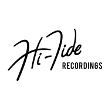I found a website that actually had info on Accutronics, MOD, and - er - some other brand Reverb Units (I think these are replacement ones like you might put in a Deluxe Reverb, etc.).
It had number of springs and the decay time on them, as well as the overall decay times (and they could be bought in short, medium, and long decay times).
I have a Line 6 M13 that has models of teh 63 stand alone verb unit, which sounds very good to my ears. Though there's also a model of the kind used in a Twin, I find the 63 model actually can be dialled in to be much closer to my TRRI. Furthermore, my amp's internal verb is so "soaky" even at just barely on (2 on the dial) with a pretty long decay time and pretty "present". It also has some weird over-ring that I find if I'm turning the amp up and playing with any kind of gain - like a nice crunchy rhythm, it sounds, well, bad.
But the 63 Model in the Line 6 doesn't have this over-ring so it actually works great in front of the amp.
It has settings for Tone and Decay, as well as Mix and Pre-delay (or early reflections). Tone and Decay are no problem - I set them to taste.
The Mix is a wet/dry so I set it to taste to.
However, what I've noticed is, to get a Pipeline like sound, I need the pre-delay up around 110 ms and the mix pretty high. Nothing wrong with that - not as drippy as the real thing but as close as this device is going to get (and better sounding than anything else I have).
But I was toying today (as I've also done in the past) in getting it to sound like a "light" verb on my Twin.
Mix is way down - but here's the thing I'm curious about - I feel like to get the same sound as the amp, the pre-delay needs to be around 30ms.
So what I'm wondering is, do old spring reverbs even have any kind of pre-delay (early reflections) with their reverb structure, and if so, is it both measurable and consistent with number on the knob.
IOW, it seems like when I turn up the mix, the pre-delay needs to get longer (though I am trying to emulate the Pipeline sound, not my Twin at that higher setting).
I can use an expression pedal to "scroll" between low mix and 30 ms and high mix and 110 ms, and anything in between! So I could actually do a faux Green Onions where there's verb on the guitar, but there's a lot more during the solo. So I can get any range between a subtle "barely there" verb, up through a 50s style verb, to a more soaky surf verb.
What I'm trying to decide is if the pre-delay is being kind of accurate and it should "follow" the mix depth - longer pre-delay times at greater reverb depth. I know I can just use my ears! But it got me curious about actual tanks and how they work when you turn the knob on them.
My models don't really have a "Dwell" control, so I wonder if Dwell has anything to do with pre-delay, or depth - or what -
FWIW,
Decay is like feedback on a delay - how long it hangs around.
Mix is wet/dry mix - how "present" the reverb effect is (or how lost the dry sound becomes in it!).
Pre-delay actually seems to have a very subtle effect, but interactive with the mix.
So when you turn up a single knob verb on a Twin - is it "dwell" "Mix" "decay time", or some fixed combination of all of them.
I know the 63 stand alone they're modelling has Tone and Mixer, which are probably 1:1 with my parameters. But it has "dwell" as well - so is that decay, pre-delay, or some combination thereof?



























